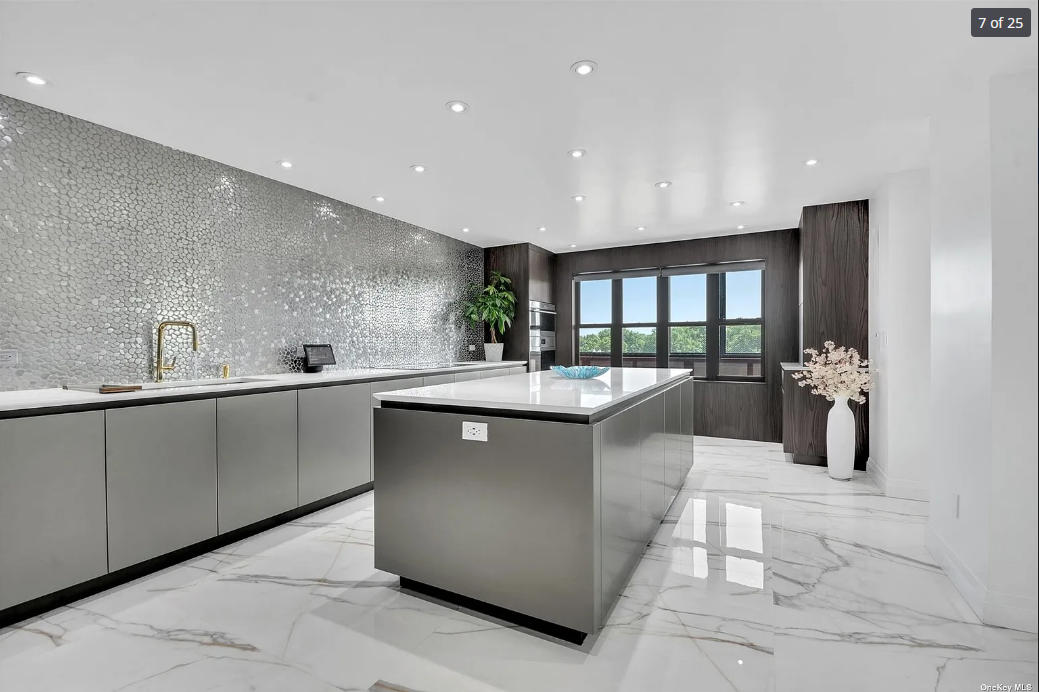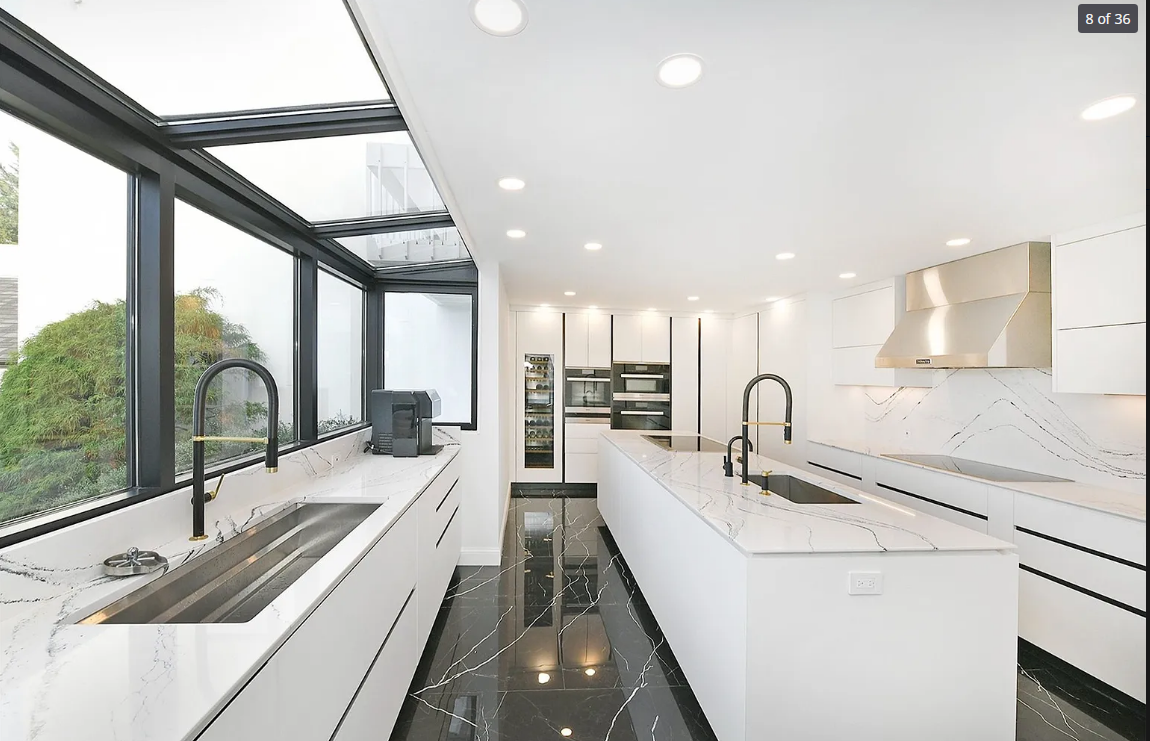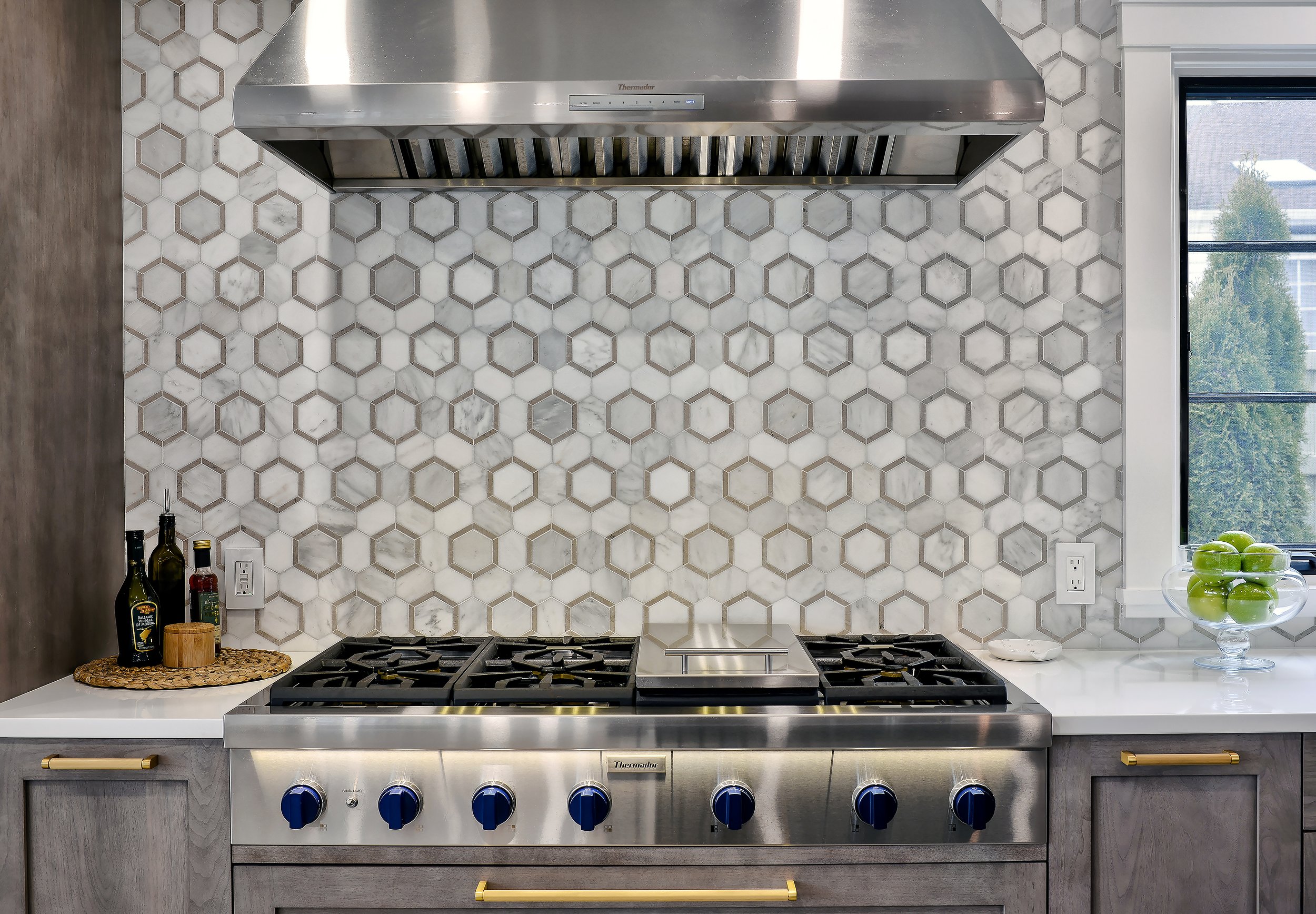When you're relocating to a new home, upgrading a significant space such as your kitchen, can make your move considerably easier when you complete the remodel before you move in. For most families, it is difficult to live without a kitchen. Other renovations, including bathrooms, are a little easier since you most likely will have more than one functional bathroom at a time.
The benefits of renovating your kitchen before moving are numerous. The immediate convenience of a modern, functional kitchen reduces the burden of your move by adding normalcy to mealtimes. Whether it’s a gut remodel, changing the footprint, improving storage, upgrading cabinets and appliances, or customizing the kitchen design, these upgrades provide comfort and efficiency that will last for years.
Even if you cannot stay where you are until the remodel is done, you will be way ahead of the game if you begin the process before moving.
Open Concept Kitchen/Dining/Living Room
The Kitchen Remains The Star of Your New Home
In the kitchen, meals are made, memories are created, and families gather. When moving into a new house, you’ll want this space to be as functional and welcoming as possible. Even if the rest of your home is in boxes, a kitchen that suits your needs can make a world of difference. Whether cooking for one or hosting a dinner party, a well-designed kitchen enhances the experience. If you're unsure where to start, ask a kitchen designer for help. They lend their expertise on the design, layout, storage solutions, and choosing the right materials. In other words, a professional kitchen design ensures your home feels complete right from day one.
Personalize Your Kitchen Right Away
Having your kitchen redesigned and remodeled is a thoughtful process that should not be rushed. Choosing a designer, cabinetry style/brand, appliances and kitchen remodel contractor takes time. Quite frankly, the process should begin before you even decide on the home you want to move into. If you at least choose your kitchen designer, cabinetry style and contractor, you are poised to have a seamless process once you close on your home. Bringing the designer to measure your kitchen before you close should be easy. Most Real Estate agents can make that happen. Of course you should not order the cabinets until you actually close, just in case something prevents closing. Once you close, the designer will order your cabinets which can be 8-14 weeks, depending on the brand you choose. And the remodel can begin a couple weeks before receiving the cabinets. Installation should take 1-3 weeks. If you need renovations before the installation, starting 2-4 weeks before the cabinets arrive is a good idea.
7 Things I need to Know Before Remodeling My Kitchen
One of the best things about upgrading your kitchen is the ability to personalize the space. You can design it to fit your lifestyle and taste from the start. Benefits of kitchen upgrades include:
● Creating a layout that works for your cooking, dining & entertaining style.
● Choosing styles, colors and finishes that match your home’s aesthetic and personal taste.
● Installing modern features that make the kitchen more efficient, neat and fun.
● Avoiding the hassle of working around old, outdated elements.
● You can enjoy your new space by customizing your kitchen early without waiting for future renovations.
Thoughtful kitchen design planned for glass door pantry between kitchen & dining area
A Stress-Free Start with an Upgraded Kitchen
Moving into a new home can quickly become overwhelming, with boxes piling up, utilities to turn on, and the challenge of organizing your new space. However, upgrading your kitchen before the move is a simple way to reduce the stress of this busy time. By doing so, you’ll avoid the hassle of renovation dust, noise, and disruption while you're unpacking. Imagine stepping into a fresh, beautifully organized kitchen as soon as you arrive — one ready for you to cook and enjoy without delay. With a new kitchen ready to go, your transition becomes much easier..
To make the entire moving process smoother, consider hiring residential movers you can trust. A reliable moving company will carefully transport your belongings, giving you peace of mind and freeing you up to focus on more important tasks—like settling into your new home and making the most of your beautiful, newly renovated kitchen. With experienced residential movers handling the logistics, your move can be seamless, allowing you to enjoy the excitement of your fresh start without the extra stress. Check the ratings of the mover before you hire them.
Boost Your Home's Value with Kitchen Upgrades
Upgrading your kitchen can significantly increase the value of your home as well. A modern kitchen is one of the most appealing features for potential buyers. So, if you plan to sell later, this investment will pay off. Plus you will enjoy an amazing kitchen until then. Consider small changes that have a big impact, like replacing old appliances or adding new countertops. You can also add sustainable kitchen cabinetry, which looks great and appeals to eco-conscious buyers. Anyhow, if you're opting for this, here’s what to focus on:
● Install energy-efficient appliances.
● Replace old cabinetry
● Change the layout of the kitchen – enlarge it or make it more functional if you have a poor design.
● Upgrade countertops, backsplash & flooring with durable, stylish materials.
● Modernize lighting fixtures.
● Opt for smart storage solutions.
By making these changes early, you’ll enjoy the benefits now and have a more marketable home in the future.
Kitchen cabinetry brand, style/finishes, appliances, back-splash and flooring chosen before closing on the house.
Ensure Safety and Efficiency with Kitchen Upgrades
With these changes, you'll also get safety and functionality. Old appliances, faulty wiring, or outdated plumbing can lead to accidents or costly repairs. By addressing these issues ahead of time, you ensure a safer space for you and your family. Additionally, modern upgrades can boost the efficiency of your kitchen, saving you time and money. So, when considering these improvements, here's what you and your designer and contractor can do:
● Fix or replace any faulty wiring or plumbing.
● Vent your hood to the outside for better air quality
● Replace materials that may have high levels of formaldehyde like cabinets and flooring.
● Check for mold
● Add insulation to outside walls
● Add smart lighting, security and temperature control features.
● Install ergonomic solutions like rollouts, adjustable shelving, easy to use handles
● Consider universal design for aging family members
● Replace outdated appliances with energy-efficient models.
These upgrades enhance safety and make your kitchen more practical for daily use, setting the stage for a smooth move-in experience.
Enhance Your Kitchen’s Functionality and Style
When upgrading your kitchen, consider both functionality and aesthetics. Modern designs offer smart storage solutions that greatly impact everyday use. You can add pull-out shelves, built-in organizers, Lemans or lazy Susans to keep everything in its place. At the same time, it’s important to create a visually appealing space. Beautiful high quality cabinets are the bones of any kitchen. Also, explore flooring materials for your kitchen that are both durable and stylish. Options like hardwood, tile, or eco-friendly choices can complement your design. Don’t forget to update light fixtures; good lighting can completely transform the atmosphere. These upgrades will improve the kitchen’s efficiency and make it a pleasant and inspiring place to spend time. Make your kitchen move-in ready and enjoy your meals when you arrive at your new home.
Manhattan apartment renovation - Kitchen was designed and purchased at closing.
Making the Most of Your New Home with Kitchen Upgrades
When you're about to start working on your move, you should seriously consider investing in kitchen upgrades. The benefits of doing your kitchen remodel before moving are clear: a more efficient, safer, and aesthetically pleasing space that makes the transition to a new home much smoother. These changes can improve not only the functionality of your kitchen but also its long-term value. Whether you plan to stay for years or consider selling sooner, a renovated kitchen boosts enjoyment and resale potential. By prioritizing this space, homeowners can ensure a fresh start in their new home without the hassle of future renovations.



















































